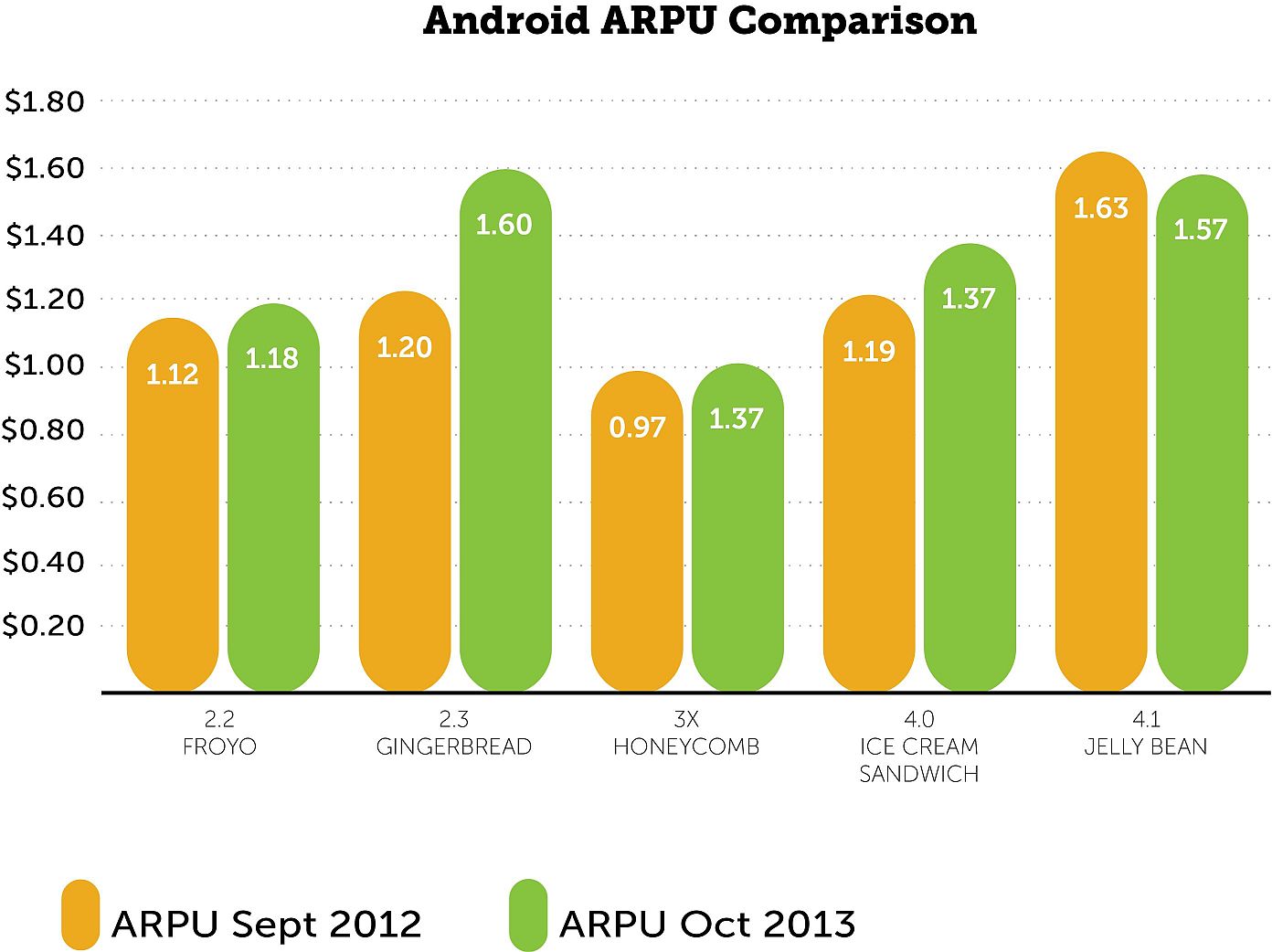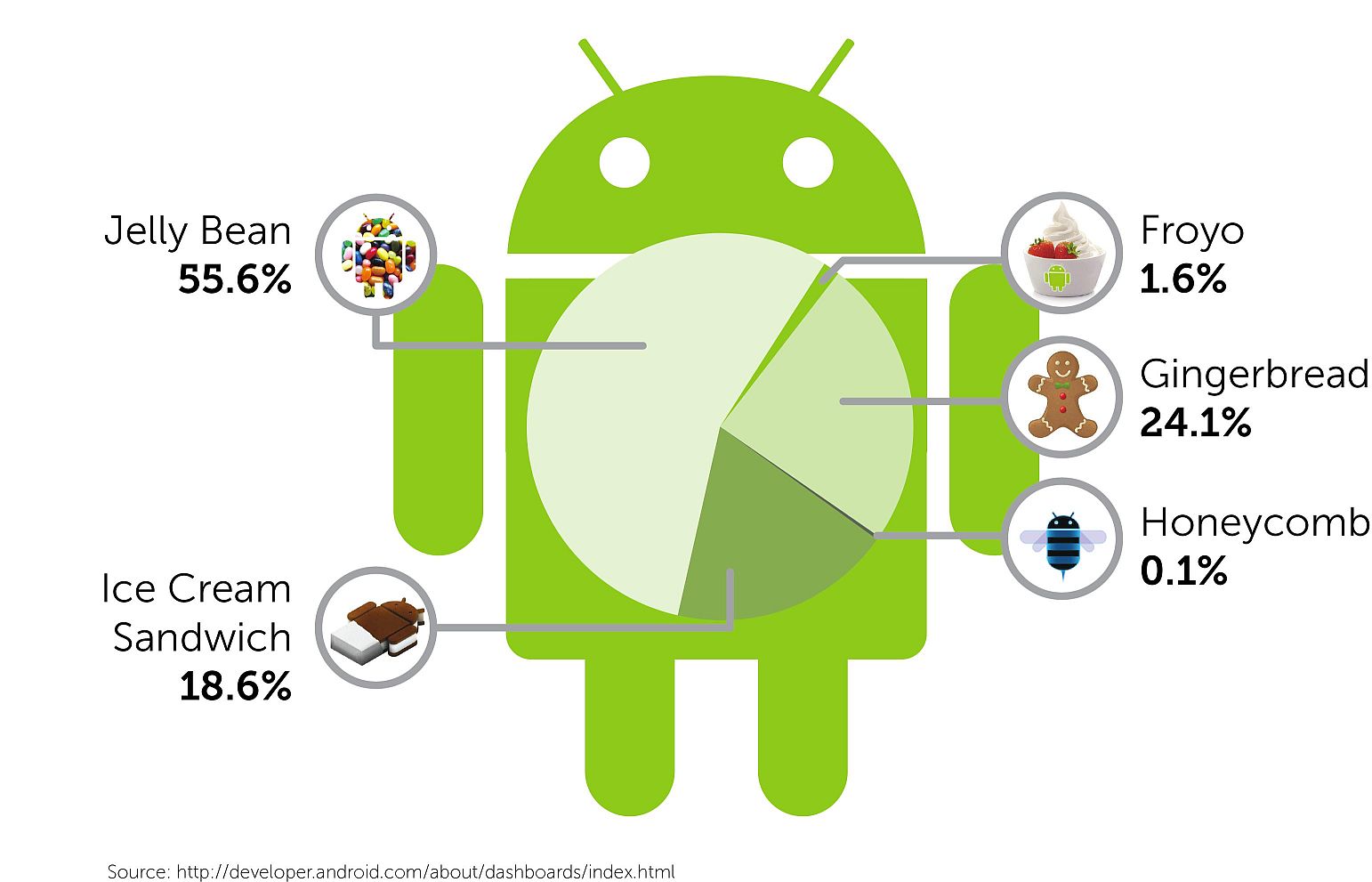Android devices have been outselling iOS devices for some time now, but Apple still has some advantages over Google in this competition. The primary one is that apps tend to monetize better on iOS devices, and one of the main reasons usually cited for this is the fragmentation of Android, both in the vast array of different devices and in the versions of the operating system. Apple’s iOS7 saw an incredible 22 percent adoption rate just 24 hours after it first became available, and now stands at 74 percent of iOS devices running the latest version of iOS. Meanwhile, Android users are slow to update to the latest version of Android (only 1 percent have KitKat), and in some cases their devices won’t support newer versions of the OS. The result is a market with many different versions of the Android OS.
Mobile ad network Tapjoy has provided data on the monetization rates for each of the Android operating system versions. The data shows that Jellybean has surpassed Gingerbread as the platform’s highest monetizing OS, but the larger story here is what that means for KitKat and developers thinking of building apps for the latest release.

Last year, Tapjoy’s data showed that Android ARPU (average revenue per user) rates got better with each subsequent release. But this year, the playing field is more level, with the most prominent OS versions monetizing about the same. That trend indicates that fragmentation may be less of an issue for developers than in the past, since they can now expect similar monetization from users regardless of which OS version they’re on. It also means that there may be no real need to rush out and start developing new features based on KitKat.
The [a]list daily spoke with Tapjoy’s chief marketing officer, Peter Dille, about the findings and what it means for Android development going forward.
The trends noted by Tapjoy will help monetization on Android narrow the gap with iOS in ARPU, but it’s not a complete win, according to Dille. “The gap is definitely becoming smaller, but we don’t see Android completely catching up to iOS any time too soon, Dille said. “iOS has a big lead on Android because its in-app payments are more effective — mainly owing to the fact that Apple already has so many consumer’s payment information, which makes in-app payments more streamlined. This will make it hard for Android to completely catch up to iOS in overall ARPU.”

Google has been encouraging users to update their operating systems for a while with limited success, but Dille feels that may improve. “KitKat [the latest version of Android] was a great step in this direction, because of what they did to make it available on a broader variety of phones,” noted Dille. “We expect that once Google works with the hardware manufacturers to make KitKat available, the updates will happen more quickly than previous OS versions.”
The overall market picture for Android developers in 2014 seems “very promising,” according to Dille. “Android’s market share continues to skyrocket, and it recently caught up to iOS in volume of apps available,” Dille pointed out. “Its lead in tablets is especially strong, and we see that as one of the most important markets in 2014 and beyond. We believe that KitKat is going to attract even more device manufacturers, which in turn will lead to more innovation and even better devices. So the developers who are building for Android right now are in good shape, and they’ll have access to more and more consumers throughout the next year or two.”

